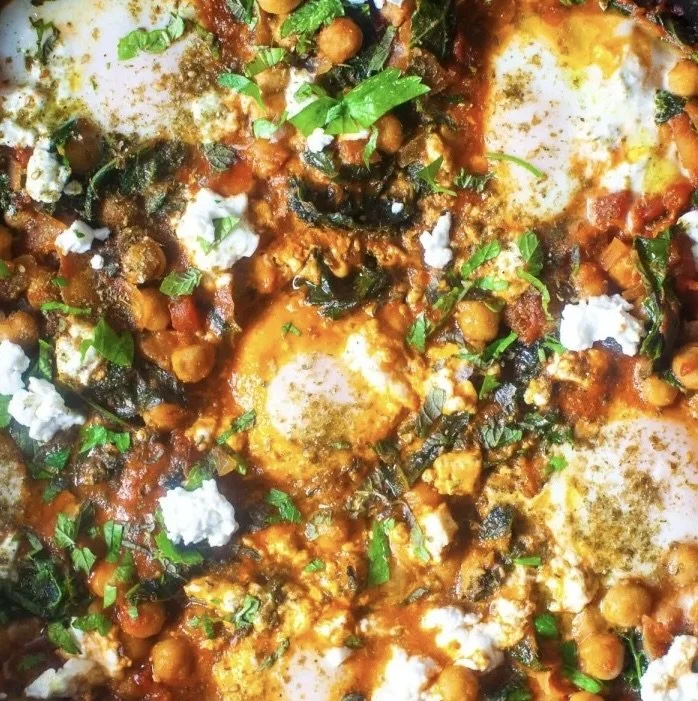Chickpea and swiss chard shashuka
ingredients
Extra virgin olive oil
1 large yellow onion, finely chopped
3 garlic cloves, finely minced
1 teaspoon ground cumin
1 teaspoon ground coriander
1/2 jalapeño pepper, de-seeded and finely chopped
Kosher salt and black pepper
2 15-ounce cans cooked chickpeas, drained and rinsed (about 3 1/2 cups)
15-ounce can crushed tomatoes
1/2 cup (125ml) vegetable broth or stock
4 ounces swiss chard or kale, stems removed
1 cup (150 grams) feta, crumbled
4 to 6 large eggs
1 tablespoon za’atar
Handful of mint leaves, chopped
Toasted sourdough, to serve (optional)
Dollops of plain Greek yogurt, to serve (optional)
method
Begin by warming olive oil - just a generous splash, about 1-2 tablespoons - in a spacious, deep skillet or Dutch oven over medium heat. Once the oil is shimmering, scatter in your onion, garlic, spices, and jalapeño. Let them cook slowly together until the onion softens and turns translucent, about 4-5 minutes.
Pour in the tomatoes, stock, and chickpeas, seasoning with a teaspoon of kosher salt and several turns of fresh black pepper. Stir everything together gently and bring to a quiet simmer, adjusting the heat lower if needed to keep it from bubbling too vigorously. Cover and let it cook peacefully for 5-7 minutes, allowing the sauce to thicken slightly.
Nestle the kale into the sauce, cover again, and cook until the greens surrender into tender wilted ribbons, about 2-4 minutes. Taste and adjust the seasoning to your liking. Create little nests in the sauce for your eggs, then carefully crack them in. Dust the eggs with a pinch more salt and pepper, then sprinkle feta over everything. Cover and let simmer gently for 6-10 minutes, until the whites set but the yolks remain luxuriously runny.
To serve, finish with a drizzle of olive oil, a dusting of za'atar, and scattered fresh mint. If you'd like, accompany with crusty sourdough and a dollop of plain yogurt.
Cook's Note
The art of perfectly cooked eggs in this dish comes down to patience and attention. Don't hesitate to peek under the lid frequently and rotate the pan if needed to ensure even cooking. Consider your timing, too - if you won't be eating right away, it's fine to pull the eggs when the whites are just barely set, as they'll continue cooking from the residual heat as the dish rests.notes

